Chemnitz
Jewish Life in ChemnitzThe German city of Chemnitz in the state of Saxony has been making headlines recently as the birthplace of Germany's first Kosher beer. Called "Simcha," it was created by the brothers Lars-Ariel and Uwe Dziuballa. While the two Jewish restaurant owners are pleased with the sudden media interest, they are also disappointed that the issue of Jewish integration is of less public interest than beer. The brothers say that while beer might be normal to Germans, Jewish life is less so.
Bilbao, 10 Years Later
Art | 05.12.2007
Otto Dix in Chemnitz: Major Art for a Minor Town
The eastern German city of Chemnitz made a big-league art acquisition when it lured a major collection of Otto Dix paintings to a new home there. The deal is part of the town's overall move to make a cultural comeback.
In an amazing coup, down-and-out Chemnitz beat stronger rivals like Leipzig, Dresden and Stuttgart to acquire the private collection of Munich gallery owner Alfred Gunzenhauser.
The 2,945 piece collection -- itself a surprise as few people knew of its existence -- includes 290 artworks by New Objectivist painter Otto Dix, numerous works by Expressionists such as Ernst Ludwig Kirchner, and more.
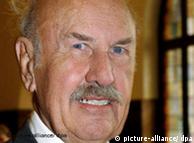 Bildunterschrift: Großansicht des Bildes mit der Bildunterschrift: An eye for art: Gunzenhauser found a home for his collection
Bildunterschrift: Großansicht des Bildes mit der Bildunterschrift: An eye for art: Gunzenhauser found a home for his collection
From the various cities that showed interest, which included Stuttgart and Berlin as well as Saxony neighbors Leipzig and Dresden, Gunzenhauser selected Chemnitz as a home for his collection, after the town offered to create a permanent home for the artworks.
Strength in numbers
The Gunzenhauser Museum was dedicated on Dec. 1, 2004.
"Chemnitz was the first city that could offer the collection its own house," said Thomas Freidrich, the Gunzenhauser Museum's curator.
"It is only by showing the core of the collection all together that the works can be best appreciated," he said. "Until now, many of the paintings were unknown. Now that they are being shown together, we are realizing what an absolute treasure we have on our hands."
Officials hope the creation of a world-class modern art museum will help bring back some of the former glory to Chemnitz, a city with a dwindling population and 10 percent unemployment.
Artistic tradition in Chemnitz
Art in Chemnitz has a "long and deeply rooted" tradition, Friedrich explained.
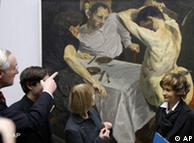 Bildunterschrift: Großansicht des Bildes mit der Bildunterschrift: Many German artists are repesented in the collection, including Johannes Grützke
Bildunterschrift: Großansicht des Bildes mit der Bildunterschrift: Many German artists are repesented in the collection, including Johannes Grützke
"Around the end of the 19th century, business -- mostly textiles -- in Chemnitz was booming," he said. "Industrialists invested a lot of money in art and architecture. As a result, art and architecture flourished."
In the 1920s, the Galerie der Moderne showed works by Expressionists and Die Brücke -- the most modern artists of the time.
But then came the double blows of the Nazis' destruction of "degenerate art," followed by the bleak years under communist rule, when the city became known as Karl- Marx Stadt. It has yet to recover, financially or culturally.
Yet today, the third-largest city in the struggling state of Saxony is working hard to re-establish its reputation as a cultural mecca. The city's recently adopted motto is "Chemnitz -- The Modern City," -- referring in part to the city's deep roots in the modernist movements of the 1920s. It is an image Ingrid Mössinger, the director of the city's art collections, has gone to almost superhuman lengths to support.
Mössinger's many coups
One of Mössinger's earliest art-world successes was snagging the international blockbuster Picasso and His Women for Chemnitz's art museum, the Kunstsammlung Chemnitz. She also conceived and curated a current show of paintings by singer-songwriter Bob Dylan, which will eventually travel to New York and other destinations.
A "series of fortunate events" between 2002 and 2003 led to the acquisition of Gunzenhauser's collection, Friedrich explained.
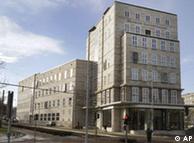 Bildunterschrift: Großansicht des Bildes mit der Bildunterschrift: The building's expressionist architecture suits the collecton, many say
Bildunterschrift: Großansicht des Bildes mit der Bildunterschrift: The building's expressionist architecture suits the collecton, many say
"It was Chemnitz's good luck that just at the time when Mr. Gunzenhauser was looking for a home for his works, the right people with the right means came together and made that happen," Friedrich said.
First of all, Mössinger got wind that the collection was available. Then she got the needed support from Chemnitz's then-mayor. Finally, a local savings bank moved out of its downtown headquarters, leaving an empty building just waiting to be renovated into a museum.
A perfect match
The Expressionist facade of the new museum matches well with the content, Friedrich says. And in Chemnitz, the collection has a chance to come into its own -- moreso than if it had gone to a city with a more developed museum scene.
"If he had given his collection to a gallery in Munich or Berlin, the collection would have barely been noticed, considering how much art those cities already have," Friedrich said. "Mr. Gunzenhauser certainly wanted his collection to get the most attention possible ."
Not only will the collection benefit from its connection to Chemnitz, but, organizers hope, Chemnitz will benefit from the collection.
In general, investing in art as a means of boosting the economy has become a common tactic for European cities. Among the first to do so was Bilbao -- and to great effect. The industrial town in northern Spain underwent a renaissance after it opened its Frank Gehry-designed Guggenheim Museum. The phenomenon soon got the name "the Bilbao effect."
Possible 'Bilbao effect'
"Its possible Chemnitz could experience some 'Bilbao effect' from this museum," the curator conceded.
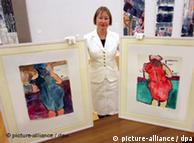 Bildunterschrift: Großansicht des Bildes mit der Bildunterschrift: Ingrid Mössinger was first to bring Dylan paintings to the public
Bildunterschrift: Großansicht des Bildes mit der Bildunterschrift: Ingrid Mössinger was first to bring Dylan paintings to the public
"In terms of being an art city, Chemnitz has been behind Dresden and Leipzig up to now. But through the Gunzenhauser collection, I imagine that the tables have turned, and now people will recognize Chemnitz as a serious city of art and culture…. We are expecting tourism to improve here as a result."
Friedrich added that since the museum opened, he has been deluged by requests for information about how to get to the city, museum opening hours, catalogs, and people wanting to know how to give coupons for exhibit tickets as Christmas presents.
But whether the positive effect will be long-term or short-lived remains to be seen, he said.
"Of course, we'll do our best to see that it lasts . The collection certainly has enough potential to stay fresh for the long term."
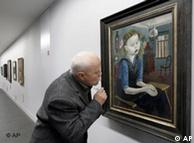
沒有留言:
張貼留言